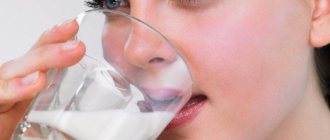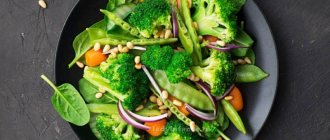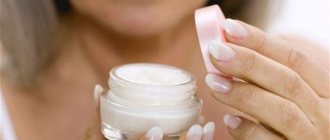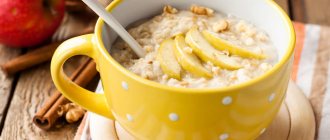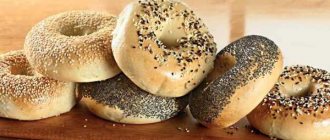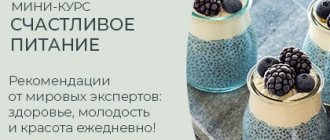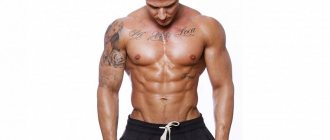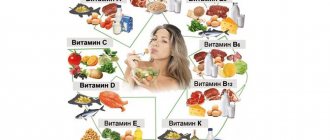When building a muscle frame, nutrition plays an important role, which requires careful selection of foods in the diet. Therefore, many are interested in whether honey is good for sports. Flower nectar is considered a natural source of fast, energizing carbohydrates and nutrients. It helps you recover and make it easier to bear loads. At some stages, for example, during drying, the proportion of carbohydrates and the number of calories decreases, which requires adjustments to the diet.
What are the benefits of natural honey for athletes?

This remedy will be especially useful for bodybuilders, since they are the ones who most often need to accelerate muscle growth. Honey will bring the following benefits to all trainees:
- The product helps burn excess fat reserves, which, in turn, accelerates and makes muscle building more effective;
- When performing basic exercises, strength indicators increase;
- The vitamins, micro- and macroelements contained in the composition increase the body’s protective functions and strengthen the immune system;
- Systematic consumption of this sweet helps to normalize metabolic processes;
- Honey is able to launch regenerative and restoration processes in the body;
- After hard and long training, the athlete’s energy resources are restored several times faster.

What are the beneficial properties of honey for athletes?
The beneficial properties of a bee product for athletes are based on its component composition. Honey includes an amino acid series that is necessary for muscle fibers. The presence of simple and complex carbohydrates, proteins, vitamins and microelements includes nectar in the group of mandatory products when playing sports. Benefit:

- absence of a sharp jump in blood glucose and reduced release of insulin compared to sugar;
- provision of ready reserves (glycogen) for energy output;
- strengthening immune defense, aiding recovery after exercise;
- the presence of a complex of amino acids in an easily digestible form, which goes towards building muscles;
- supply of simple carbohydrates for quick energy;
- stimulating progress in strength exercises;
- normalization of metabolism, saturation with vitamins and minerals;
- cleansing the body of free radicals, waste, toxins;
- calming the nervous system, which is required for restorative sleep;
- reducing “bad” cholesterol in the blood, the risk of hypertension, diabetes, heart disease, obesity;
- destructive effect on fungi, bacteria, elimination of inflammation.
Honey in sports is valued for improving appearance, athletic performance, and also for its overall benefits to the body. If you replace sugar with a bee product, you will experience weight loss.
honey in sports, benefits and harm
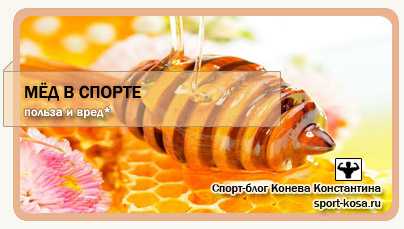
So, my dear subscribers, I am again glad to welcome you to my website. And today we will talk about such a well-known product as honey. Its benefits and harms have been discussed since time immemorial, but personally, having dug up a bunch of information on the Internet, I could not find a single reasonable argument on the topic of the harm of honey for an athlete and therefore I will tell you exclusively about its benefits, dispel a couple of myths and tell you about honey recipes that will help you grow faster, be healthy and strong! Go.
Honey in sports, myths
Wanting to compile a full review, I searched many resources for information about why honey can be harmful. And, to be honest, the only thing I came across was the fear of gaining excess weight due to excessive consumption of honey. Allegedly, honey contains a huge amount of carbohydrates, which will certainly be deposited as a solid layer of fat under your skin. My friends, this is nonsense! Honey consists of fast carbohydrates without sucrose impurities, which means that it is a unique energy drink and nothing more. With reasonable consumption and stable training, it can, on the contrary, reduce the level of subcutaneous fat if used instead of sugar.
The only real disadvantage of honey is that if you consume it excessively, there is a very high probability of developing an allergy. Since honey itself is a product of complex processing, it must be consumed wisely. Let's just say that nothing bad will happen from 100 grams of honey per day, but if you eat half a kilogram of it a day, it will already be fraught with consequences.
By the way, honey also has a number of useful properties, depending on the quality, color and where the apiary was located. Thus, even the most ordinary wild honey will strengthen your immune system and stimulate metabolic and anabolic processes in the body. And for those who suffer from chronic diseases of the trachea and lungs, it will be an ideal medicine when consumed with tea or milk. But more on that later.
Honey in sports, an ideal energy drink
It is impossible not to notice that honey, as an excellent source of energy, can be used both before and after training. Its advantage over sports nutrition and a pre-workout complex with similar properties is that, like caviar, it is absorbed almost 100% within half an hour, which cannot be compared with any artificial stimulant. Just two tablespoons of honey before training will allow you to:
- — Accelerate metabolic processes and thereby improve blood circulation;
- — Increase the speed of muscle cleansing from lactic acid;
- — Compensate for energy and amino acid compounds;
- - Concentrate better and work more efficiently;
Well, honey after a workout will allow you to reduce catabolic processes to almost zero, filling the energy exchange gaps almost instantly! And all this is thanks to the fine structure and rapid absorption of this product, due to which it not only stimulates recovery processes, but also does not irritate the flora of the intestines and stomach. But that's not all! If you combine honey with some other ingredients, you can get unique sports cocktails that even anabolic steroids cannot compare with! After all, honey in sports is valued for the fact that it is extremely rich in B vitamins, such as B2 or B6, which are responsible for accelerating anabolic processes and can also boost the level of production of the natural male hormone - testosterone. As a result, accelerated recovery and rapid development of muscle tissue, which can be achieved in very few ways. And among other things, honey itself stimulates the speedy healing of wounds, increases the pain threshold and improves the overall tone of the body, if, as I said earlier, it is consumed in moderation. Don't forget this, my friends. As you may have already noticed, when conducting research like this time, I very often come across the fact that many foods are harmful, yes, but harmful only when consumed in excess. Therefore, let's keep the measure and everyone will be healthy!
Sports cocktails made from honey
Recipe No. 1. In sports, honey is often used in combination with nuts, as this makes it an ideal product for closing the protein-carbohydrate window after training. Just 50 grams of honey and 30 grams of various nuts per serving can stimulate anabolic processes due to their natural properties. And if you dilute all this with freshly squeezed orange or grapefruit juice, you will also get a very good fat burner that can be consumed after cardio training, half an hour before meals.
Recipe No. 2. Honey is also very good in combination with... garlic! Yes, yes, this is a rather old recipe, which was once used by circus strongmen, and its essence is that together, these two components actively stimulate the production of growth hormones and testosterone, including, which can increase it by as much as 2-3 times. Thus, if you grate a clove of garlic and mix it with a tablespoon of honey, taking this mixture at night, you will very soon notice that you have begun to recover many times faster!
Recipe No. 3. Well, another simple recipe, known to all of us since childhood, but successfully ignored, is honey with warm milk. A glass of such a cocktail, which in turn can be mixed with nuts, berries and fruits, has a number of beneficial properties, ranging from a positive effect on the immune system to strengthening blood vessels in the brain.
CONCLUSION
And finally, I would like to say that all the information that I have collected for you is just the tip of the iceberg. The history of honey stretches back centuries, and if you're interested in learning more about it, check out your city's event schedule. Most likely, you will also have a honey fair, where you can learn from real experts in their field everything you can know about honey, and also purchase various varieties of honey, which, perhaps, will even help you in sports much more than classic store-bought honey. Be healthy and eat honey, have you ever seen a sick bear? That's it!
SEE ALSO
Best regards, Konev Konstantin
All blog articles
sport-kosa.ru
What is honey made of?
The composition of honey is very complex - it contains over 300 substances, some of which have not yet been identified. Almost 80% of the product consists of carbohydrates:
- Glucose - up to 36%. Main energy supplier.
- Fructose - up to 33–42%. It is superior to other carbohydrates in sweetness and, under certain conditions, is converted into glucose.
- Disaccharides - from 5 to 10%, mainly presented in the form of sucrose (up to 6%) and maltose (4-6%). Their concentration in honey is determined by its type; most maltose is present in linden honey, and significantly less in sunflower honey.
- Dextrins. The result of the breakdown of starch as a result of interaction with bee enzymes. Slows down the crystallization of honey.
The proportion of water in the product varies from 15 to 21% and depends on maturity, type, climatic conditions, storage temperature.
Protein substances
Their concentration is 0.04–1.56%. Protein substances enter honey along with plant pollen or are formed as a result of exposure to bee saliva and are represented by the following enzymes:
- invertase - ensures the breakdown of sucrose into fructose and glucose;
- amylase - promotes the breakdown of starch;
- catalase is an enzyme through which oxidation and reduction processes occur.
Enzymes perform the function of biocatalysts, helping to accelerate and more actively occur the reaction.
Important! When heated, enzymes lose activity and the beneficial properties of honey disappear!
Organic acids
The proportion of organic acids in the product can reach 0.1%. They have a significant impact on taste and smell. Fruit and lactic acids give honey a pleasant sourness, promote long-term storage, and enzyme activity lasts longer. The acidity of honey mainly depends on the place of collection.
Amino acids
The special value of honey is that it contains an almost complete set of essential amino acids (valine, isoleucine, lysine and others), that is, those that the human body cannot produce on its own. These substances are needed for biochemical transformations; without them, protein synthesis, the main building material for muscles, will not occur.
Minerals
The mineral substances present in honey, and this is up to 0.02–0.8%, are enough to fully provide the body with vital elements and minerals. 100 g of product contains 4% of the daily value of zinc, which is not so often found in foods, and copper, about 7% of iron (promotes the formation of red blood cells), potassium and manganese, approximately 25% of cobalt. To fully saturate the body with minerals, it is enough to consume 1 tablespoon of honey every day.
Vitamins
Honey contains a complex of B vitamins, vitamin C, nicotinamide, retinol, tocopherol, vitamin K. It is noteworthy that they retain beneficial properties for several years. The concentration of vitamins depends on the properties of pollen.
Other substances
In addition to carbohydrates, minerals and vitamins, honey contains pollen, phytoncides - which provide the antibacterial effect of the product, aromatic and coloring substances, as well as hormones. The latter have a positive effect on the cardiovascular system. The product also contains fungal organisms and yeast, which cause fermentation.
The effect of honey on the body
In sports nutrition for people seeking to build muscle mass through bodybuilding, honey is valued due to the following properties:
- When used regularly, it does not cause glycemia and prevents the release of glucose and insulin into the blood under increased stress.
- Stabilizes blood sugar levels.
- Easily digestible protein compounds of amino acids contribute to the construction and restoration of muscle tissue.
- Normalizes sleep.
- Lowers cholesterol levels.
- Positively affects metabolic processes.
- Strengthens general immunity.
Honey is a source of concentrated energy and promotes rapid restoration of glycogen after strength training. Due to the presence of flavonoids and antioxidants, it removes toxins and free radicals from the body.
The benefits of honey for the body
The healing properties of honey have been known for a long time - it is recommended to use it not only for treatment, but also for the prevention of diseases and strengthening the immune system. Main beneficial properties:
- saturating the body with useful substances: vitamins, minerals, phytoncides;
- antioxidant effect, provided by acids and flavonoids - reduce the likelihood of cancer and cardiovascular diseases, diabetes;
- lowering blood pressure - it is enough to use honey instead of regular sugar, a side effect is a decrease in the level of cholesterol and triglycerides in the blood;
- pronounced antibacterial effect - honey is used to treat dermatological pathologies, including psoriasis;
- activation of metabolic processes, normalization of acidity in the stomach, correction of the microflora of the gastrointestinal tract;
- strengthening the immune system.
Honey is actively used to treat viruses and colds - alone or together with other natural products.
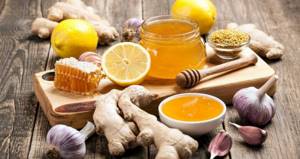
When should an athlete treat himself to honey?
Sports nutritionists recommend consuming bee nectar during the following periods:
- As an “energy advance” immediately before training. A couple of teaspoons is enough.
- As a gainer in the process of its most active part. 1-1.5 teaspoons.
- After training, in the evening, before bed. Due to its composition, nectar promotes the active formation of the hormone melatonin in the body, which is necessary for quality rest and recovery, in approximately the same volumes. If you want, for convenience, you can dissolve it in a glass of warm water - this will increase the rate of its absorption.
In light of the above, the usefulness of honey for an athlete becomes simply undeniable. It is energy efficient, easily digestible, helps lower cholesterol, fight free radicals, normalize metabolism, heal wounds and promote good rest. Undoubtedly, this product is universal in its areas of application, has a good taste and is easily available. There is simply nothing to cover such a carte blanche.
We hope this article was useful to you and allowed you to take a fresh look at a delicacy that is well known to us. If so, subscribe to updates, eat honey, and may strength and health be with you. All the best!
How and when is it better for a bodybuilder to take honey?
Nutritionists offer several ways for weightlifters to take honey. It can be eaten an hour before the start of training, which will contribute to the influx of a large amount of energy, and the athlete will not feel tired for a long time.
After all, carbohydrates are the main source of energy for our body. The second way to consume honey is after a workout. In this case, the athlete’s energy reserves will quickly be replenished (due to the closure of the protein-carbohydrate window), which will help to quickly overcome fatigue and restore strength.
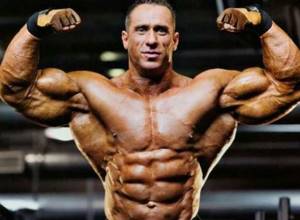
If a bodybuilder has problems sleeping due to long, frequent and exhausting workouts, then honey and milk will again come to his aid, which should be eaten half an hour before bedtime. When taken this way, it will not only provide you with a full, healthy sleep, but will also help your body recover overnight.
This miracle product can be eaten throughout the day with tea or coffee, which can be added instead of sugar. The main thing is not to put honey in too hot water (more than 60° C), because it will lose its healing properties and even become harmful.
I’ll add one more nice quality of honey: despite the fact that it is a very sweet product, it has a low glycemic index (does not stimulate a sharp release of insulin by the pancreas) and does not lead to a sharp increase in blood sugar levels.
You can eat honey in different ways: in its pure form from a spoon, stirring it in liquid (water, black or green tea, milk), and also with cottage cheese. By the way, some believe that honey allows calcium to be better absorbed.

It is interesting that honey is offered to athletes both for gaining weight and for losing (drying) muscles. If you want to lose weight, then after training you should not eat this product so that the body uses glycogen from the muscle depot. After 18.00 it is also better to eat protein foods and complex carbohydrates, which honey does not include.
Alas, dishonest sellers manage to add useless additives to this wonderful product that reduce the beneficial qualities of honey (sugar, starch, flour). Such a mixture will not give anything useful to the athlete. So, don’t be tempted by the low price of this product, find a good, trusted supplier - it’s worth it!
That's it, friends: your desire for achievements in sports is quite compatible with tasty foods, if they are healthy. The only contraindication to consuming honey is an allergy to bee products. - Shall we try?
Honey in bodybuilding: composition, how best to use it
Honey is the most famous beekeeping product, containing many vitamins, minerals and trace elements. In bodybuilding, this food product is taken by many athletes to improve training performance and better recovery. Honey was especially popular among security forces in the 20th century, when athletes did not have access to sports pharmacology and other doping agents. In this article we will look at all the benefits of this wonderful beekeeping product.
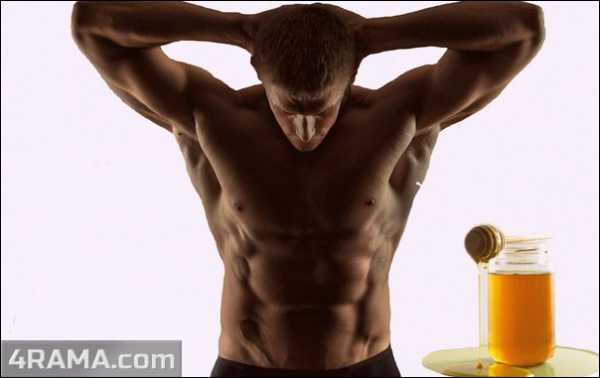
Composition of honey
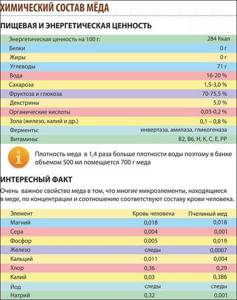
One of the main features of this product is its high calorie content (100g of honey provides an athlete with more than three hundred kilocalories). Honey does not contain fats or proteins, and 100g of this product provides athletes with about 70g of carbohydrates. Honey consists of the following components:
- 18% water;
- 30% glucose;
- 35% fructose;
- 12% are other various sugars;
- And 5% are minerals and amino acids.
Honey contains fast carbohydrates, due to which athletes instantly satisfy hunger and quickly restore strength. This beekeeping product is especially useful for those athletes who train for endurance.
The benefits of honey in bodybuilding
Honey has many beneficial properties, but if we are talking about bodybuilding, then we can highlight the following:
- An ideal source of energy with plenty of vitamins and minerals;
- Accelerates the body's recovery after heavy physical exertion;
- Promotes weight loss if used instead of sugar;
- Helps you fall asleep better if taken with milk before bed;
- Normalizes metabolism, strengthens the immune system;
- Increases performance and strength indicators.
Studies have shown that if you take honey daily at a dose of 1g per 1kg of body weight, this leads to an increase in athletic performance by more than 15%, as well as an improvement in deadlift results by almost 8%. Naturally, in most cases, this only affects amateur athletes, since professionals, thanks to pharmacological support, already achieve maximum performance.
How to take honey
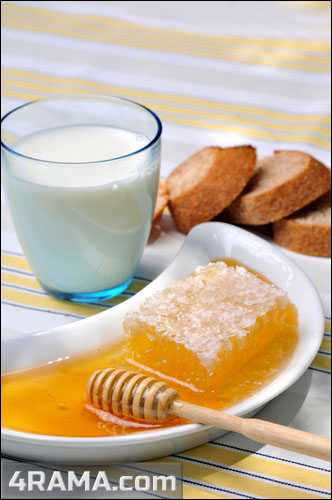
It is recommended to take honey for bodybuilding an hour before training and within the first 30 minutes after training. Athletes use it in different ways, some simply eat it with spoons, others mix it with water. It has been noted that the effectiveness of honey increases if taken together with bee pollen; some experienced athletes take honey with it.
Many experts recommend taking honey for bodybuilding at night along with milk, this improves sleep and recovery. Many athletes add honey to protein shakes, and when bulking, they often eat it with walnuts.
As for how much honey athletes should consume, it all depends on your diet. Experts recommend consuming about 1g of honey per 1kg of body weight, and the maximum allowable dosage is 200g per day. We recommend such fairly large portions for those who do not have other sweet foods in their diet.
You should start taking honey with small portions (1-2 tablespoons per day). Too large portions may cause an allergic reaction.
Video: Truth and myths about honey in bodybuilding
4rama.com
How to use bee products correctly
We figured out whether it is possible for athletes to eat honey. And in what dosage should it be used? It should be introduced into the diet both immediately before physical exercise and during rest.
Morning fuel/healthy snack
To support the body and get a whole range of vitamins and minerals, you can: in the morning or throughout the day:
- Drink warm green tea with a teaspoon of honey product. Definitely not hot! Since at temperatures above 40 degrees the chemical elements included in honey (plant antibiotics, vitamins, simple sugars) are destroyed.
- Add a teaspoon of honey product to dried fruits.
- Spread on bread or a slice of hard cheese.
- Sweeten cottage cheese or porridge with one or two teaspoons.
Honey in sports before training
To increase energy before exercise, it is recommended to consume carbohydrates. Flower nectar is considered an excellent supplier due to the presence of fructose, glucose, and maltose. Advantages of flower nectar:
- easy and quick absorption (in 30–60 minutes);
- increasing endurance when consumed before exercise;
- the proportion of carbohydrates per 100 g is 70–80 g, no fat;
- avoiding hypoglycemia (sharp drop in blood sugar), which causes fainting during exercise.
Athletes are recommended to consume 1 g of product per 1 kg of body weight 1 hour before the start of exercise. As you exercise, nutrients will gradually enter your bloodstream. To speed up absorption, it is better to make warm honey water.
Honey in sports after training
Fitness takes a lot of energy and strength, so the body needs recovery after exercise. Carbohydrate foods are suitable for this, which is where natural sweetness belongs. Advantages:
- filling gaps in energy metabolism, reducing catabolic processes;
- saturation with easily digestible amino acids, which are used for high-quality restoration and construction of muscle fibers;
- removal of radicals and breakdown products thanks to antioxidants.
It is recommended to consume honey after training within half an hour, 1 g per 1 kg of body weight. Taking nectar together with protein products (meat, cottage cheese, egg whites, protein) will speed up recovery.
List of products for women
For women aged 35-40 years, a slightly different list of products is recommended. This is necessary because over the years the metabolism in the body loses its intensity and the amount of subcutaneous fat increases.
While drying the body, you are allowed to consume:
- Lean cooked poultry (without skin)
- Boiled white fish fillet, squid
- Meat broths
- Egg white
- Unprocessed rice and buckwheat
- Only fresh cabbage (especially Chinese cabbage)
- Low-fat cottage cheese and kefir
- Vegetable salads (fresh peppers, cabbage, cucumbers, radishes, etc.)
- I love any greens
- Avocado
- Plain water (2 liters per day)
- Green tea
Carbohydrate intake is minimal, but cannot be completely eliminated.
It is recommended to completely eliminate sweets (except dried fruits and honey), flour products, white rice, dairy products (except low-fat cottage cheese, kefir, cheeses), mushrooms, smoked and salty foods, all kinds of dressings (mayonnaise, sauce, etc.). The use of vegetable oils should be minimal (1-2 teaspoons per day). From fruits, you can leave citrus fruits (especially grapefruits).
How to use honey to build muscle mass?
As part of energy drinks, honey is recommended for consumption before, during and after training. Before starting classes (60-30 minutes), honey ensures a stable, gradual flow of glucose into the blood. Thanks to this, during training exercises, glycogen reserves are consumed to a lesser extent, thereby reducing the body's fatigue.
Consuming honey directly during bodybuilding exercises helps increase muscle power output. Consuming drinks with honey improves your overall performance.
It is recommended to eat honey in small quantities after completing a training complex to mitigate the effects of the hormones catecholamine, glucogan, and cortisol, the increased production of which is a natural reaction of the body to increased physical activity. In this case, honey is used to close the carbohydrate window after a workout. The restorative effect of honey becomes more effective in combination with high-protein foods (low-fat varieties, meat, cottage cheese).
Contraindications to the use of honey are individual intolerance to the components of the product.
Which honey is best for gaining muscle mass?
For heavy weight training, dark flower nectars are better suited - buckwheat, chestnut, heather, angelica or eucalyptus. Benefits using the example of buckwheat:
- supply of minerals, proteins, iron to the body;
- renewal of blood composition;
- cleansing blood vessels;
- increased hemoglobin in the blood;
- stimulation of tissue regeneration abilities.

Eating to build muscle involves increasing the amount of carbohydrates and calories in your diet. Therefore, the bee product is used at this stage. The energy value of dark varieties sometimes reaches 400–415 kcal. The permissible norm is no more than 200 g per day.
Is it possible to dry honey?
When drying the body (reducing body fat), a gradual reduction in carbohydrates in the diet is required. Changes in diet and training will allow muscle definition to appear. Athletes are interested in two questions:
- Can bee products be dried?
- Is it true that honey, when added regularly to the diet, burns fat.
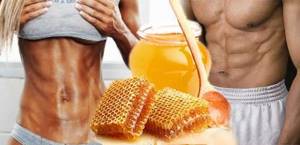
There is no reliable answer to these questions. Flower nectars contain a high content of simple carbohydrates and calories, which is undesirable for drying. However, the bee product definitely provides more benefits than sugar, so it is sometimes used as a replacement.
Knowing what happens to the body when it dries will help determine how the bee product works. Flower nectar activates metabolism and stimulates the release of bile secretion, which is involved in the breakdown of adipose tissue. It is these processes that underlie drying. Vitamins and minerals are used to compensate for nutrients, the amount of which decreases with limited nutrition. Therefore, natural sweetness can not be removed from the diet.
If you decide to leave nectar in your diet, it is better to eat it in the morning on an empty stomach or for breakfast. It is common to take honey water (1 spoon of sweetness per glass). However, you can add honey to your morning meals. In the last weeks of drying, sweet foods are removed completely, as the amount of carbohydrates is minimized.
phase 1
First of all, we need to understand how much protein, fat and carbohydrates we need to consume per day. We will calculate the need for proteins and carbohydrates using the formula (weight ×2). Let's say you weigh 57 kg, which means protein / carbohydrates = 114 g.
Since we are still training, we add about 30-40 grams of protein and carbohydrates. We will get fats from protein and carbohydrate sources (you can add a few grams of fish oil per day). But you should not exceed the limit of 0.5 grams per 1 kg of weight, i.e. with a weight of 57 kg = 28.5 grams of fat per day.
You need to eat in small portions: 5-6 times a day. It is best to eat most carbohydrates immediately after training. Closer to bedtime, carbohydrate consumption decreases.
So, what foods can you eat while drying?
Sample drying menu for girls weighing 57 kg (phase 1):
| Time | Food | Carbohydrates (g) | Proteins (g) | Fat (g) |
| 07 30 | — | — | — | |
| 08 00 | 30-45 minute jog | — | — | — |
| 8 30 | 1 cup oatmeal with water, 4 hard-boiled egg whites | 62 | 30 | 7 |
| 11 00 | 4 | 25 | 2,5 | |
| 14 00 | 170 gr. chicken breast, 1 cup brown rice (cooked) | 45 | 38 | 9 |
| 16 00 | Taking a fat burner (lipo 6 series) | — | — | — |
| 16 30 | 1 serving of protein shake | 4 | 25 | 2,5 |
| 17 00 – 18 30 | Training | — | — | — |
| 19 00 | 100 grams fried flounder, ½ cup brown rice (cooked) | 23 | 24 | 2 |
| 22 00 | 6 | 12 | 2 | |
| Sum | Kcal = ~1.414 | 144 | 154 | 25 |
If you weigh 67 kg, add 100 kcal (daily requirement ~ 1,500 kcal), if 77 kg - 150 kcal (~ 1,650). Do not forget that the calculations were made for physically active people (jogging in the morning, training in the evening). If you don't have time to run in the morning, take 30-40 grams from carbohydrates and proteins.
During the first phase you should do 30-45 minutes 4 times a week. In order for subcutaneous fat to be burned, the pulse should be like this:
(220 – your age x 0.70 =?), i.e. if you are 25 years old, then your pulse should be around ~ 136 beats per minute.
After 4 weeks, move on to phase 2.
Drying nutrition for girls: phase 2
The next stage lasts another 4 weeks. Here we reduce the amount of carbohydrates to a minimum and increase the amount of fat, as well as increase the amount of protein.
Proteins – 3 g per 1 kg of weight. Fats – up to 2 g per 1 kg of weight. Carbohydrates – 0 g, obtained only from products that contain proteins and fats.
In phase 2, lethargy, fatigue and even apathy will appear. This is due to the fact that the body will receive practically no carbohydrates. In just 2 weeks the body will have to rebuild itself. This is the hard phase, but it is the most effective; at this stage you lose subcutaneous fat the fastest.
Sample drying menu for girls weighing 57 kg (phase 2):
| Time | Food | Carbohydrates (g) | Proteins (g) | Fat (g) |
| 07 30 | Taking a fat burner (lipo 6 series) | — | — | — |
| 08 00 | 30 minutes cardio | — | — | — |
| 8 30 | 3 whole hard-boiled eggs | 0 | 18 | 18 |
| 10 30 | 1 serving protein shake, 1 teaspoon nut butter | 8 | 29 | 10,5 |
| 12 30 | 170 gr. chicken breast | — | 33 | 7 |
| 14 30 | 1 can canned salmon (in water), 30 g cashews | 4 | 51 | 36 |
| 16 30 | Taking a fat burner (lipo 6 series) | — | — | — |
| 17 00 – 18 30 | Training | — | — | — |
| 19 00 | 120 g beef, 1 cup green beans | 8 | 29 | 23 |
| 22 00 | ½ cup low-fat grain cottage cheese | 6 | 12 | 2 |
| Sum | Kcal = ~1.608 | 26 | 172 | 96,5 |
Drying nutrition: phase 3
Proteins – 3 g per 1 kg of weight. Fats – up to 1 g per 1 kg of weight. Carbohydrates – 2 g per 1 kg of weight.
You also make up the menu from the permitted products above. This phase also lasts 4 weeks. Here, as we see, carbohydrates are added, and the amount of fat is reduced. Proteins unchanged.
Drying nutrition: phase 4
This is the final phase. Proteins – 3 g per 1 kg of weight. Fats – 0.5 g per 1 kg of weight. Carbohydrates – from 1 to 2 g per 1 kg of weight.
At this stage, the “roller coaster” comes into play. The amount of carbohydrates either decreases or increases.
Monday – 120 g carbohydrates. Tuesday – 90 g carbohydrates. Wednesday – 60 g carbohydrates. Thursday – 120 g carbohydrates. Friday – 90 g carbohydrates. Saturday – 60 g carbohydrates. Sunday – 120 g carbohydrates.
LiveInternetLiveInternet
Diet number one At this very gentle stage of nutrition, I recommend a certain ratio of macronutrients in your diet. 50 percent protein, 30 percent low- to medium-glycemic carbohydrates (that is, from dark rice or wholemeal pasta, but not carrots or grapes) and 20 percent fat (from natural, unrefined vegetable oils or fish, if possible). Protein Eat at least two grams of protein per kilogram of body weight daily. Sources of protein: seafood, soybeans, fish (can be fried, but without skin), lean meat (boiled, stewed or grilled), poultry (any parts without skin, can be fried), low-fat cheese (up to 10 percent fat). Also low-fat cottage cheese, low-fat milk, any canned fish in oil or in its own juice (for example, tuna and pink salmon), eggs (any number of whites, but no more than one yolk per day). In such difficult moments, all kinds of casseroles and cheesecakes made from cottage cheese with sugar substitutes, cocktails made from cottage cheese, several berries, oatmeal and protein, or simply cottage cheese with a sugar substitute dissolved in water are very helpful. Carbohydrates Using the food glycemic index table, turn your attention to sources of carbohydrates with a low (or almost low) glycemic index. Guided by this principle, as well as the outdated, but proven theory of simple and complex carbohydrates, we will determine what carbohydrates we can afford at this stage of our diet. The best sources of carbohydrates will be: vermicelli from durum wheat (glycemic index 50), split yellow peas, boiled (GI 45), rice bran (GI 27), barley (GI 32), red, green, black lentils (GI 28-34 ), black beans, dried beans, soybeans, soybeans (GI 24-43), peanuts (GI 21, it is worth noting that legumes and nuts in large quantities have a bad effect on digestion and should be eaten in moderation, analyzing body reactions). Wholemeal spaghetti (GI 53), brown rice (GI 79, but who can doubt the quality of this product?!), buckwheat (GI 78), oat bran (GI 78), oatmeal (GI 87), sour apples (GI 54, but I don’t recommend more than one or two apples a day). I recommend consuming all kinds of spaghetti and cereals only as breakfast or immediately after a workout, as they are very nutritious and easily digestible. At this stage of the diet, when calculating your daily carbohydrate intake, you may not include carbohydrates obtained from low-calorie, fiber-rich vegetables. List of “lean” vegetables Cucumbers, tomatoes, artichokes, lemons, eggplants, squash, zucchini, bamboo shoots, celery, white and cauliflower, green peas, pea sprouts, broccoli, champignons, chicory, Chinese cabbage, green lettuce, lettuce valerian, kale, tuber celery, kohlrabi, pumpkin, onions (leeks), red beets, carrots (raw, but not fresh juice or stewed!), papaya, red or green peppers, chanterelles, radishes, radishes, rhubarb, Brussels sprouts cabbage, red cabbage, sauerkraut, goat, soybean sprouts, asparagus, spinach, sorrel, porcini mushrooms, tomatoes, savoy cabbage, onions or green onions, garlic. You can eat salted and pickled vegetables, mushrooms, etc. Fats Fats can make up about 20 percent of your calorie intake. Eat nuts, olives and olives within your daily fat limit, eat fatty fish and add olive oil to your salads. Water and drinks You can still indulge in coffee, tea and sugar substitutes based on “cyclamate”, “saccharin”, “aspartame”, i.e. no carbohydrates, no calories, and no-calorie drinks like Coca-Cola Light. For now, you can still treat yourself to tomato juice and water with lemon. Completely eliminate fatty dairy products, including cheese, sour cream, full-fat milk, cream, butter, rendered fat, and margarine. Fatty beef, pork, lamb and other types of fatty meat. Mayonnaise, ketchup, fatty sauces. Completely eliminate all foods that contain sugar, fruits and fruit juices, as well as fructose-based sweets should be completely excluded, since according to the latest research by scientists, fructose also has a high glycemic index and is not recommended for diabetics or those losing weight. Just eliminate all foods that are sources of low-quality “high-glycemic” carbohydrates, which are digested very quickly, are not necessary for full training and recovery and do not have high nutritional value: jam, honey, candy, chocolate, sugary drinks, sweet juices, glucose-rich fruits ( grapes, mangoes, sweet pears), ice cream, fried potatoes, etc. Products with a high concentration of starchy processed carbohydrates and gluten, which are also unnecessary: baked goods and pasta, pizza, cookies, muffins, cakes, etc. Diet number two Once a week, monitor the amplitude of the waist by taking two measurements of the waist circumference at a height of two centimeters above the navel: when inhaling-relaxing and when exhaling-retracting. Weigh yourself twice a week (in the morning, on an empty stomach at the same time). If “diet number one” stops working within five to seven, maximum ten days, move on to “diet number two.” At this more advanced stage of nutrition, I do not recommend radically changing the ratio of macronutrients in your diet. 50 percent protein, 30 percent low- to medium-glycemic carbohydrates, and 20 percent fat (from natural, unrefined vegetable oils or fish) is still used as the benchmark. However, we are completely reviewing the lists of foods allowed on our table and the methods of counting and preparing them. Protein Eat at least two grams of protein per kilogram of body weight daily. Sources of protein are now only: seafood, fish (any variety), lean meat (boiled, carcass or grilled), poultry (boiled or baked breast only), zero-fat cottage cheese (start counting the carbohydrates contained in cottage cheese), any canned fish in its own juice (for example, tuna and pink salmon), eggs (any number of whites, but not a single yolk per day). Carbohydrates Products such as: vermicelli from durum wheat, boiled peas, rice bran, barley, red, green, black lentils, black beans, dried beans, soybeans, peanuts, wholemeal spaghetti, rice, buckwheat, oat bran, We still consume oatmeal only in the first half of the day or immediately after training, but only every other day (that is, always on training days). On days when there is a “taboo” on porridge and pasta, we can eat products from the list of “lean vegetables” given above, but only on condition that they are not thermally processed. Eat vegetables and herbs raw these days, as well as in salads, seasoned with olive oil. Don't forget to exclude sour apples from this list. Fats Fats can make up about 20 percent of your caloric intake. We remove nuts, as they are rich in carbohydrates, eat olives and black olives, taking into account daily fat limits, eat fatty fish and add olive oil to salads. Water and drinks We drink coffee, tea and sugar substitutes that do not contain carbohydrates and calories, as well as zero-calorie drinks, but make sure that they make up no more than 30 percent of the liquid we drink per day, and the rest should be pure water without gas! Diet number three Protein Eat at least two grams of protein per kilogram of your own body weight daily. We eat lean fish (without limiting ourselves), fatty fish (no more than 200 grams per day), poultry (only boiled chicken breast or turkey breast), exclude cottage cheese and cheese, continue to eat any canned fish in its own juice (for example, tuna and pink salmon), eggs (any number of whites, but not a single yolk per day). Carbohydrates Products such as: vermicelli from durum wheat, rice, buckwheat, oatmeal, barley, wholemeal spaghetti, oat bran, we still use only in the first half of the day, but only once every 3-5 days (we make carbohydrates days less frequent as fat burning slows down) on training days. On days when there is a “taboo” on porridge and pasta, we can eat products from the list of “lean vegetables” given above, but only on condition that they are not thermally processed. Eat vegetables and herbs raw these days, as well as in salads, seasoned with olive oil. Fats We remove nuts, as they are rich in carbohydrates, we remove olives and black olives, taking into account daily fat limits, we eat fatty fish and add olive oil to salads. Water and drinks We drink coffee, tea and sugar substitutes that do not contain carbohydrates and calories, as well as zero-calorie drinks, but make sure that they make up no more than 30 percent of the liquid we drink per day, and the rest should be pure water without gas! Diet number four At this stage, even those foods that previously allowed you to burn fat are now also excellent for maintaining body weight or even increasing it. Now we are talking about a kind of fasting, maximum depletion of fat reserves in the body and the most strict, meager and monotonous diet. Even fatty fish, which theoretically promote fat burning as products containing healthy Omega-3 fats, during this period can cause stagnation in weight loss and even allow you to gain weight. The same can be said about eating a lot of chicken breast. I have met bodybuilders who consumed kilograms of it during the cutting period, but the process stopped. The solution may be to completely eliminate fats from the diet, increase cardio exercises, and increase the intensity of training. Now you need to count every kilocalorie! Don't forget that each "sugar-free" chewing gum contains about 1 gram of "fast" carbohydrates, sports supplements and water-soluble vitamins also contain 1-2 grams of fructose in each serving. Therefore, during the day you can accumulate a significant amount of carbohydrates, considering that the body is now learning to extract them even from cucumbers and cabbage leaves. However, even at this stage, you should, if possible, not reduce the working weights and, at the beginning of the workout, perform at least 2-3 approaches with heavy weights and plenty of rest between sets, and then “kill” the muscle group with a large number of intense approaches with medium and light weights . Do not rush to increase the amount of cardio and increase the intensity of the training if the weight does not decrease within 3-5 days. The body loses fat in a spasmodic pattern as it struggles to maintain consistency in all processes in the body. However, if nothing changes within 6-8 days, it’s time to take measures such as a careful and gradual tightening of the diet and training regimen. If you have already made good progress after being on a low-carbohydrate diet for a long time and torturing yourself with workouts, allow yourself one carbohydrate-protein day. Of course, don't eat cake or pizza on this day, just spend this day (until 18:00) sticking to "diet number one". With the exception of dairy products, allow yourself porridge and a piece of black bread, an orange or banana, a little boiled and grated beetroot and prunes. This will start the digestive system and fill the muscles with glycogen, but at the same time you will not have time to gain back even an gram of fat. Then go back to “diet number four”. At this ruthless and inhumane stage of nutrition, I advise a truly barbaric ratio of macronutrients in your diet: 90 percent protein, up to 6-8 percent carbohydrates and up to 2-4 percent fat, after which you will feel like a prisoner in a concentration camp. Protein Eat at least two grams of protein per kilogram of body weight daily. Sources of protein are now only: lean seafood, lean fresh fish (also watch the amount of sodium in each type of fish), poultry (only chicken or turkey breast boiled several times, no more than 300-400 grams of the total amount of protein eaten). Also egg whites (egg whites now become the body's primary source of protein, to the point where you need to limit sodium in foods as much as possible). If the weight completely refuses to fall, try sitting for one to two days exclusively on egg whites and branched chain amino acids (BCAAs). Carbohydrates Now we get carbohydrates only from heat-treated and not sauerkraut (which cannot even be grated, but only cut into large pieces and try not to chew very carefully) or from fresh cucumbers. If you experience the smell of acetone in your mouth and the taste of a copper pen in your mouth, allow yourself to suck on a slice of lemon. Fats Now they are simply absent from the diet! Occasionally we allow ourselves a drop of those fats that are less digestible as fat, but are necessary for our brain and the normalization of metabolism (which is far from normal). A few tablets of Omega 3 and Omega 6 fats per day or a small portion of boiled red fish is an indulgence for the body, which you can sometimes reward yourself with for achieving a new level of definition and muscle separation. Water and drinks We drink only clean, non-carbonated water, preferably with a reduced sodium content (up to 20 mg of sodium per liter of water). Yuri Spasokukotsky
Series of messages “Health”:
Part 1 — Restoring vision Part 2 — Learning to “eat mindfully” Part 3 — Nutrition while cutting. Bodybuilding Part 4 - Losing weight with pleasure: smoothie diet Part 5 - Beauty secrets ... Part 10 - Laura London - it’s impossible not to admire! Part 11 - The importance of Omega 3 Part 12 - How to get rid of the problem of peeling nails?
Fitness series:
Part 1 - Nutrition while cutting. Bodybuilding Part 2 - Exercises for the Butt) Part 3 - Losing weight with pleasure: smoothie diet Part 4 - A set of exercises for the legs and butt)
Sports cocktails with honey
Typically, flower nectar is consumed in its pure form or as an ingredient in sports cocktails. When preparing, nutritious foods containing proteins and carbohydrates are used to provide energy before exercise or recovery after exercise. Common recipes:
- Dissolve a large spoon of nectar with 50 ml of warm water. Add 200 ml of freshly squeezed orange juice to the honey solution. The drink is best consumed 30 minutes before physical activity.
- Place 100 g of cottage cheese, chopped banana, a tablespoon of oatmeal and honey in a blender. Add 200 ml of milk, beat until smooth, drink 1 hour before physical activity.
- Place a tablespoon of bee product, 1 chopped banana and 300 ml of low-fat milk into a blender. Shake the ingredients and drink 30 minutes after training.
- Mix a whole chicken egg (raw) and 1 large spoon of flower nectar and ground walnuts. Add 200 ml of kefir, beat until smooth. Have a cocktail after class.
- Combine a tablespoon with a glass of warm milk. Drink at night, before going to bed. This will improve sleep, help the body recover, and rest until the next workout.
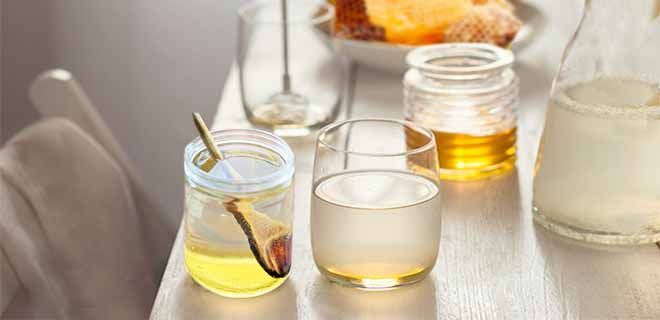
Honey is an important product for athletes, endowed with beneficial properties due to the content of micronutrients and nutrients. The increased caloric content of flower nectars helps to quickly replenish energy reserves, which increases endurance or athletic performance. When dried, the natural sweetness is used as a sugar substitute.
Which honey is best for athletes?
It is best to use dark honey, such as buckwheat. It contains a record amount of proteins and iron. It cleans blood vessels, renews blood, increases hemoglobin, and promotes tissue healing.
The most effective combination of honey and bee pollen. A teaspoon of nectar is eaten along with 0.5-1 spoon of pollen. The mixture perfectly restores physical and mental performance in case of severe fatigue.
Delicious recipes
We have already realized that honey is a valuable source of energy and strength during training. It can be consumed in its pure form with water. It is good in combination with cottage cheese and cereals. Morning muesli or oatmeal with the addition of treats will become even tastier and healthier. Cocktails are especially popular among athletes.
Citrus cocktail
Compound:
- a couple of oranges;
- 1 tsp. bee product;
- 50 ml water.
Honey is diluted in warm water, freshly squeezed orange juice is added and mixed.
Cocktail with banana and milk
Components:
- two bananas;
- 300 ml milk;
- 30 g nectar.
The banana is crushed in a blender and mixed with bee products and milk. Twist again with a blender or mixer.
Cocktail with nuts
Ingredients:
- 2 tbsp. l. honey;
- 2 grapefruits;
- 30 g nuts.
The walnut is crushed and the juice is squeezed out of the citrus fruit. Add honey to the fresh juice with nuts and shake.
Fitness casserole
You will need:
- 200 g low-fat cottage cheese;
- 2 eggs;
- 4 bananas;
- a little dried apricots and raisins;
- 10 g cinnamon.
- 1 tbsp. l. bee nectar.
Beat low-fat cottage cheese with bananas and eggs in a blender, add dried fruits and seasonings. Place in the oven for half an hour. Drizzle with honey before use. This fitness dish can be eaten at night.
Honey as a sports nutrition: lessons from history
People have been eating the product of the collective work of bees for thousands of years, since they first became acquainted with these same bees.
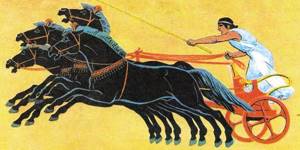
If you look at the surviving historical documents, you can find information that honey was part of the special sports diet of ancient Greek athletes. Dietetics was still in its infancy at that time, but already in those years it was clear to people that honey has a positive effect on both the strength and endurance of an athlete.
Research on honey has been carried out throughout history, in particular in the mid-twentieth century; an experiment to identify its benefits for athletic development, the effect of consumption on the speed, endurance and other physical characteristics of athletes was conducted by the famous hockey coach Canadian Lloyd Percival. The experiment, as expected, gave unequivocally positive results.
An example of a diet for drying the body
To balance your diet, you should consider an example of a diet for drying the body, and based on it, create your menu. The first week is the initial stage, so the amount of carbohydrates per day should be 120 grams. This includes 2 apples or 1 grapefruit, a portion of porridge must be low GI (buckwheat, brown rice, lentils). In addition, you are allowed to eat 2 servings of vegetable salad per day. It can be seasoned with lemon juice and 10 ml of flax oil. Allowed foods include: chicken breast, low-fat cottage cheese, kefir and cheese, a portion of fatty fish, herbs, vegetables, unsweetened fruits. You need to remove salt, bread, flour and sweets from your diet.
The second week assumes that a person will consume only 100 grams of carbohydrates, and they should be eaten before lunch. In the evening you need to eat protein dishes; low-fat cottage cheese or kefir would be an excellent solution. The third week of the diet involves reducing carbohydrate intake to 80 grams. Also during this period it will be necessary to remove cheese and fruits from the diet.
In the fourth week, you are allowed to eat only 60 grams of carbohydrates. In addition, you will need to give up carrots, and a serving of porridge should not exceed 60 grams. The fifth week is 40 grams of carbohydrates, and the sixth suggests the opposite.
The “Body Drying” diet will help you lose weight quickly. However, you should monitor your own well-being, otherwise all efforts will be in vain, and you will have to lie in a hospital bed under a drip.
Which type of honey is better to choose?
Preferably varieties with a high protein content are predominantly dark. In terms of its composition and properties, buckwheat honey, which has a characteristic dark brown color, stands out among them. It has a rich, bright aroma, and after drinking in its pure form it often causes a sore throat.
Buckwheat honey contains significantly more protein and iron (it is this that can give the product its characteristic reddish tint). Flower nectar collected from chestnut trees or meadow nectar has similar properties.

Harm and contraindications
The bee product has many beneficial properties, however, in some cases it can be harmful. Contraindications:
- allergies and individual intolerances;
- some kidney diseases - you should consult a doctor;
- gastritis in a state of exacerbation;
- acute pancreatitis;
- asthma.
Women should use honey with caution during pregnancy. The daily intake should always be taken into account, as exceeding it can cause serious health problems.
Sources
- https://muskul.pro/pitanie/med-v-sporte
- https://mirpchely.ru/produkty-pchelovodstva/med/i-sport
- https://sportpit68.ru/trenirovki/med-pered-trenirovkoj.html
- https://www.SportObzor.ru/pitanie-sportsmenov/med-v-bodibildinge-polza-meda-dlya-naraschivaniya-myshechnoy-massy.html
- https://MasterGym.ru/fitnes-pomoshchnik/stati/zdorovoe-pitanie/med-dlya-sportsmenov-vladivostok
- https://bodibilding-free.ru/eda-dlya-kulturista/med-i-bodibilding.html
- https://portalmeda.ru/zdorove/profilaktika/polza-meda-v-sporte.html
- https://vseopaseke.ru/pcheloprodukty/natur-med/med-posle-trenirovki/
- https://TopDogFitness.ru/nabor-massy/med-i-fitnes.html
- https://hagga.ru/mozhno-li-est-med-na-sushke-tela-med-v-bodibildinge-dlya.html
- https://marilina.ru/med-dlya-sportsmenov/
[collapse]
The role of coffee
A light protein-vegetable breakfast, followed by coffee, and coffee with biscuits are on the list of ideal products designed to create an athletic body.
But coffee should definitely be drunk bitter, without added sugar or sweetener. This way you can get the maximum benefit from the drink.
In addition, coffee has proven itself to be an excellent diuretic, which is very valuable during the drying period: the body receives a sufficient amount of liquid, and it does not stay in it for longer than a certain time. There is a natural circulation of fluid in the body - it is not deprived of it and cannot suffer from deficiency, but, at the same time, there is no excess fluid in it.
